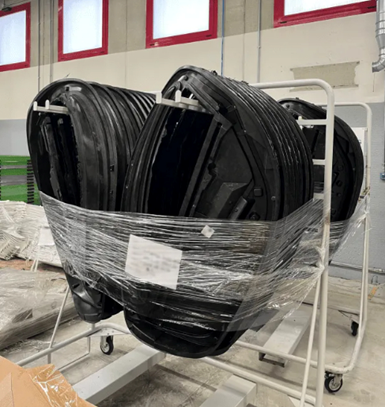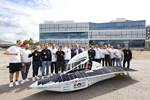Aptera reveals first composite production parts for BinC vehicle
Pre-production efforts are underway to begin building production-intent vehicles.
Aptera (Carlsbad, Calif., U.S.) has announced that the first of its parts for its solar electric vehicle (sEV) featuring a body in carbon (BinC) have been stamped from production tools commissioned at partner C.P.C.’s (Modena, Italy) manufacturing facility. Aptera revealed in 2022 the supply of carbon and glass fiber sheet molding compound (SMC) from C.P.C., which is being used to develop the six primary parts of the sustainable vehicle.

Revealed production parts.
The last stage of pre-production efforts is underway as Aptera begin receiving everything that it needs to build production-intent vehicles at its final assembly facility in Carlsbad, Calif., U.S. The unveiling of its first production parts is meant to be a tangible representation of the company’s progress and continuous achievements to come. According to Aptera, each piece of the vehicle has been carefully designed to maintain efficiency and lightweight construction.
These production-intent vehicles will be equipped with production parts sourced from trusted supply chain partners and assembled using body structures from C.P.C. They will also undergo rigorous crash testing and validation to ensure safety and reliability.
In harmony with this achievement, the company’s investment offering is open to all investors. The company currently boasts 15,000 investors and counting, and thanks everyone for the support.
Related Content
-
Trinseo demonstrates DLFT, PC for electric vehicle battery packs
The DLFT production process enhances polycarbonate’s performance qualities through high thermal stability that next-gen battery packs demand.
-
Bcomp ampliTex makes appearance in Cupra EV Cup Bucket seats
The entire Cupra Born VZ line-up features all-natural fiber front seats that highlight functionality, aesthetics and reduced CO2 emissions.
-
Spanish startup to ramp up production of “recyclable” EV prototype
Liux’s BIG electric vehicle features multiple structural components manufactured via RTM from flax fabric and a thermoset resin said to enable the entire component to be recycled and reused again.














